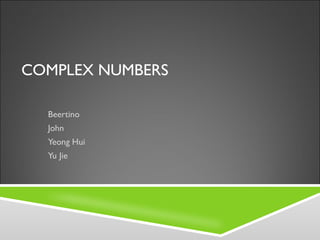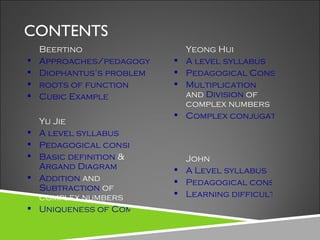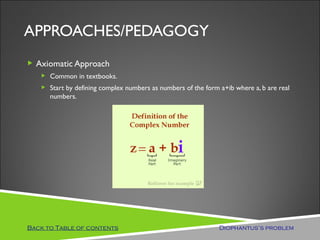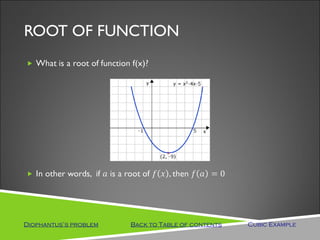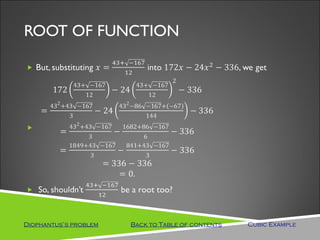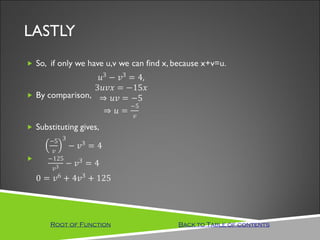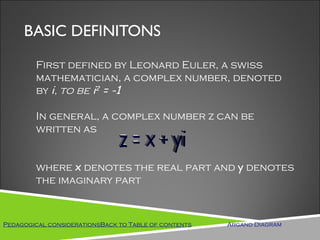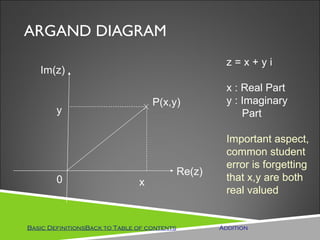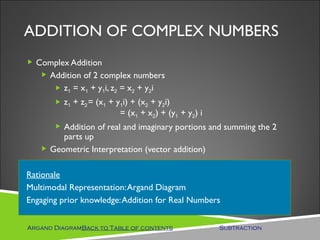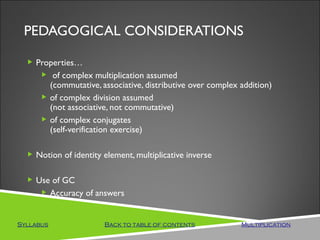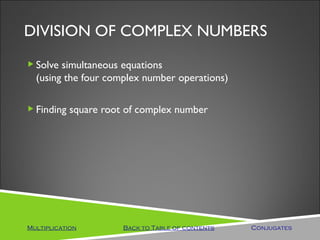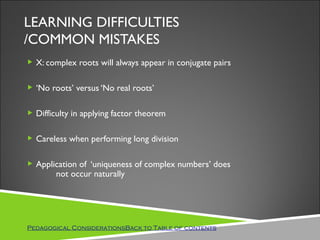This document discusses approaches to teaching complex numbers. It describes an axiomatic approach, utilitarian approach, and historical approach. The historical approach builds on prior knowledge of quadratic equations and introduces complex numbers to solve problems like finding the roots of quadratic and cubic equations. The document also covers definitions of complex numbers, addition, subtraction, multiplication, and division of complex numbers. It discusses pedagogical considerations like using multiple representations and building on students' prior knowledge.
